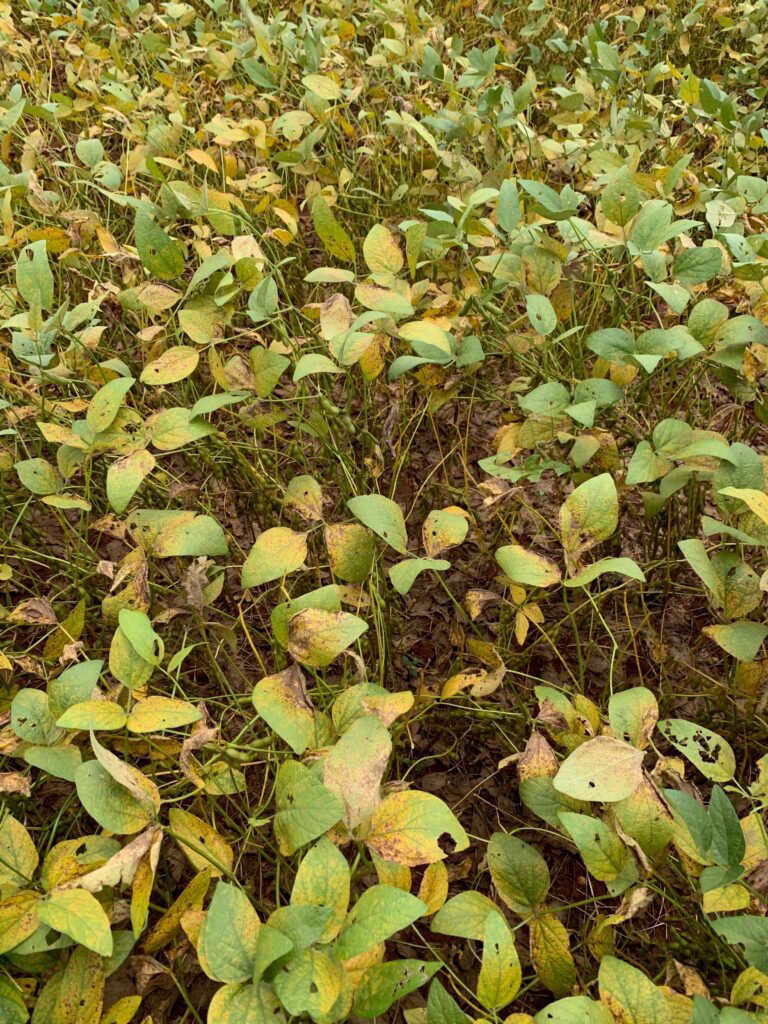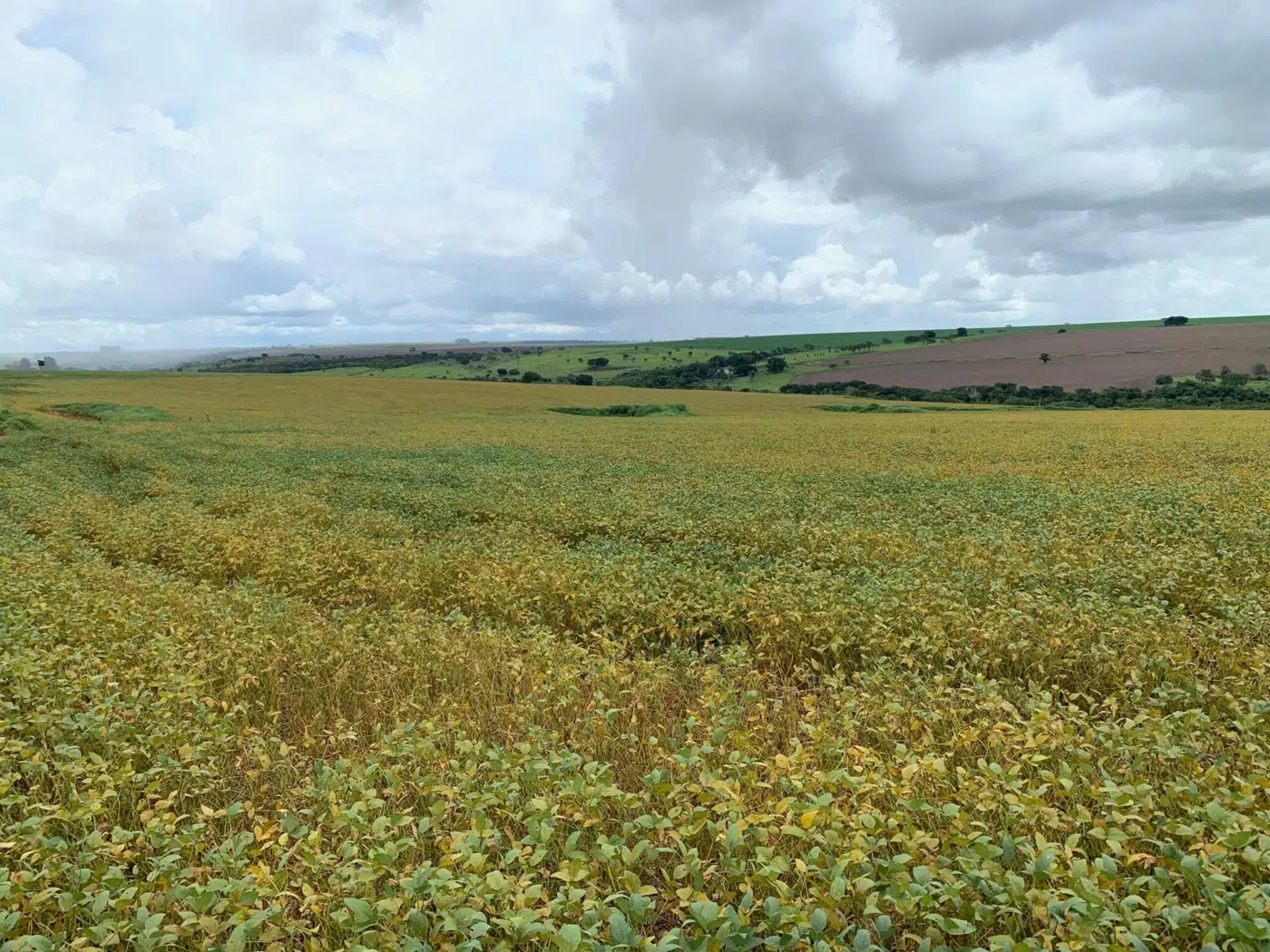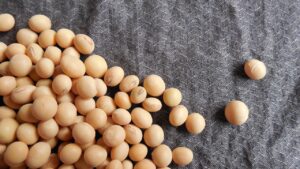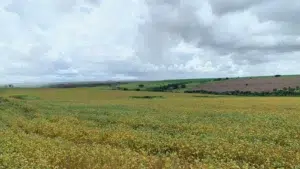With new Asian Soybean Rust resistant soybean varieties on the way, there’s hope for South American farmers.
South America is known for its fields of soybeans, but for the past few decades those fields have been threatened by one deadly disease — Asian Soybean Rust (ASR). While farmers have fought back with resistant soybean varieties and management strategies, the disease has always come roaring back. There is hope on the horizon though with new soybean varieties on the way.
“Asian Soybean Rust is in fact the biggest disease issue affecting tropical soybean production, particularly in South America where soybean used to be grown year-round. With no break in the growing season, the pathogen really built up,” Diana Horvath, president of 2Blades, explains.
The ASR pathogen is found in both North and South America, but the hot weather of the southern hemisphere continent makes it a huger threat to farmers there. According to Loren Giesler, an extension plant pathologist with the University of Nebraska-Lincoln, ASR is caused by Phakopsora pachyrhizi which is an aggressive pathogen. It can cause yield losses ranging from 10 – 80%.
Its most common symptoms can be found on the leaves starting in the lower canopy, Giesler writes. Lesions can also develop on petioles, pods, and stems. Once the plant starts flowering development of ASR symptoms happens fast causing significant levels of defoliation under the right environmental conditions. Tan to reddish brown lesions grow as the disease advances. Plants will prematurely lose their leaves as it progresses.
“With the right conditions, as soon as the spores of the fungus get into the soybean field, the crop is destroyed in as little as three weeks,” Horvath says.
For South American nations, they’re the perfect hosts for ASR. The pathogen thrives in tropical hot conditions, she adds. The pathogen is a bio tropical fungus that can live on a wide range of host plants, not just soybeans.

In South American nations, such as Brazil, farmers have two growing seasons during the year and in the past have double cropped soybeans in fields thus increasing the incidence of ASR. To try and stop ASR, there have been policies put in place to stretch the rest period for fields between the growing seasons, Horvath says.
To manage ASR, farmers have used a wide range of strategies from fungicide control to widening crop rotations. One strategy that has shown success is switching to planting early season soybean varieties, which allows the crop to mature before the ideal ASR weather conditions develop, she adds. However, fungicide resistance has become a growing problem in the ASR fight.
There are two different kinds of fungicides used to control ASR — single site and multi-site. Single site fungicides target the specific metabolic process of the pathogen which if the pathogen mutates it can overcome, Sergio Brommonschenkel, a professor at Universidade Federal de Viçosa, explains. The multi-site fungicide doesn’t have specific targets which makes it harder to develop resistance too, he adds.
It’s not just fungicides that ASR is becoming resistant to, but also soybeans bred with ASR resistance in them. P. pachyrhizi can quickly overcome single resistance genes making ASR-resistant soybean varieties no longer a protection method, Brommonschenkel says.
There is more help on the way though. In 2019, a full sequencing of the ASR pathogen genome was decoded and released by researchers paving the way for transgenic ASR-resistant soybean varieties. One of the groups involved in the decoding of P. pachyrhizi, 2Blades, is breeding ASR-resistant soybeans using transgenics. The researchers investigated soybean relatives and found ASR resistance in them.
“Through a process called map-based cloning, we screened a collection of different legumes and tracked resistance to a specific location in these legume genomes. We were able to identify effective resistant genes, and they look promising for delivering effective and durable resistance in soybean,” Horvath explains.
In 2013, 2Blades entered in a partnership with Pioneer, now Corteva, to add the ASR resistance genes into Corteva’s soybean hybrid varieties. In 2022, Corteva released a news release stating the company had conducted field trials in Latin America of the new soybean varieties with results showing strong ASR resistance. The soybean varieties are in Corteva’s hands now and haven’t been released publicly yet.
2Blades is currently working with Bayer CropScience to provide novel ASR resistance genes for Bayer’s soybean varieties.













